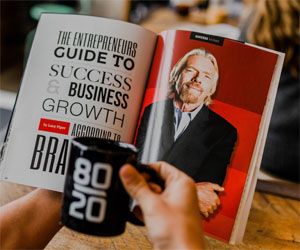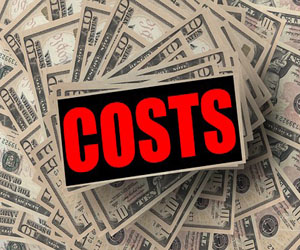


Unleash Your Imagination To Earn Money

In today's ever-evolving economy, there are countless opportunities for individuals to explore innovative ways to generate income. One such avenue that has gained immense popularity in recent years is creative income. This concept involves leveraging your artistic, inventive, and imaginative abilities to create unique revenue streams. Whether you're an artist, a writer, a designer, or simply someone with a creative spark, the possibilities are endless. In this article, we'll delve into the world of creative income, exploring what it is, how to get started, and the benefits it can bring to your financial and personal life.
Defining Creative Income
Creative income is all about turning your creativity and unique skills into profitable ventures. It includes a wide range of activities such as:
Freelancing: Offering your creative services on platforms like Upwork or Fiverr, whether it's graphic design, content writing, or web development.
Artistry: Selling your paintings, sculptures, or other artwork through online marketplaces like Etsy or at local galleries.
Handmade Crafts: Creating and selling unique handcrafted items like jewelry, candles, or clothing.
Content Creation: Monetizing your blogs, YouTube channels, or podcasts through advertising, sponsorships, and merchandise sales.
Photography: Offering your photography skills for events, stock photo websites, or through client commissions.
Digital Products: Selling digital products like eBooks, printables, or online courses.
Getting Started
Identify Your Niche: Start by identifying your niche. What are you passionate about, and what creative skills or talents do you possess? Finding your niche will help you focus your efforts and stand out in a competitive market.
Create A Portfolio: Develop a portfolio showcasing your best work. Whether it's a website, an Instagram account, or a physical portfolio, having a professional showcase of your work is crucial.
Market Yourself: Use social media, networking, and online marketplaces to reach potential clients or customers. Engage with your audience, share your work, and let your personality shine through.
Pricing Strategy: Determine your pricing strategy. Research the market to ensure your rates are competitive while reflecting the value you offer.
Continuous Learning: Creative fields are constantly evolving. Invest in continuous learning to stay updated with industry trends and sharpen your skills.
The Benefits Of Creative Income
Flexibility: Creative income opportunities often provide flexibility in terms of working hours and location. You can work from home, set your own schedule, and pursue other interests.
Express Yourself: You get to do what you love and express your creativity in a way that brings you personal fulfillment.
Multiple Income Streams: Diversifying your income through creative avenues can provide financial security, especially in unpredictable economic times.
Independence: You become your own boss, allowing you to make decisions and shape your career according to your vision.
Personal Growth: The creative process is a journey of personal growth and self-discovery. You learn to embrace challenges, think outside the box, and develop problem-solving skills.
Creative income offers a world of opportunities for those willing to explore their imaginative potential. With the right mindset, dedication, and a bit of marketing savvy, you can transform your creative endeavors into a reliable source of income. Whether you're a professional artist, a hobbyist, or simply someone with a passion for the arts, creative income can not only boost your financial well-being but also infuse your life with the joy of doing what you love. So, why wait? Unleash your creativity and embark on a journey to discover the endless possibilities of creative income.
Building And Maintaining An Emergency Fund
 What Is An Emergency Fund?
What Is An Emergency Fund?
An emergency fund is a dedicated savings account or pool of money set aside for unexpected expenses or emergencies. These unforeseen events can include medical bills, car repairs, home maintenance, job loss, or any other financial crisis that may disrupt your regular budget. The primary purpose of an emergency fund is to provide a financial buffer that allows you to navigate such situations without resorting to high-interest loans or credit cards.
Why Is An Emergency Fund Important?
Financial Security: Having an emergency fund provides a sense of financial security. It ensures that you can address sudden expenses without jeopardizing your long-term financial stability.
Stress Reduction: Financial emergencies are stressful. Knowing you have a safety net can reduce the anxiety and emotional strain associated with unexpected financial challenges.






 Stress And Anxiety: Financial stress is a common trigger for anxiety and worry. Concerns about paying bills, managing debt, saving for the future, or making ends meet can create a persistent sense of unease. This stress can lead to physical symptoms like sleep disturbances, headaches, and digestive issues.
Stress And Anxiety: Financial stress is a common trigger for anxiety and worry. Concerns about paying bills, managing debt, saving for the future, or making ends meet can create a persistent sense of unease. This stress can lead to physical symptoms like sleep disturbances, headaches, and digestive issues.
Guilt And Shame: Financial mistakes or poor money management can evoke feelings of guilt and shame. Individuals who have overspent, accumulated debt, or made poor investment choices may experience remorse and embarrassment. These emotions can hinder one's ability to make better financial decisions in the future.
Happiness And Fulfillment: Conversely, having the financial means to pursue one's passions and goals can bring joy and fulfillment. Money can provide opportunities for travel, education, experiences, and charitable giving, all of which can contribute to a sense of happiness and contentment.
Achieving Financial Freedom And Peace Of Mind
 The Essence Of Cost-Effective Living
The Essence Of Cost-Effective Living
At its core, cost-effective living revolves around making smart financial choices without compromising on quality. It's about assessing your expenses, finding areas where you can save, and prioritizing what's truly valuable to you. It's not about denying yourself life's pleasures; it's about enjoying them in a way that aligns with your financial goals.
The Benefits Of Cost-Effective Living
1. Financial Freedom
One of the primary benefits of cost-effective living is the road to financial freedom. By cutting unnecessary expenses, managing your budget wisely, and saving consistently, you can build a strong financial foundation. This financial security provides you with more choices in life, such as the ability to pursue your dreams, travel, or retire early.
2. Reduced Stress
Financial stress is a significant source of anxiety for many people. Constantly worrying about bills and debt can take a toll on your mental and physical health. Cost-effective living helps alleviate this stress by providing you with a clear financial plan and reducing the burden of financial obligations.






A Compassionate Gift For The Future
 The Importance Of Inheritance Planning
The Importance Of Inheritance Planning
Financial Security For Loved Ones: One of the primary reasons for inheritance planning is to ensure the financial security of your loved ones, including your spouse, children, and other beneficiaries. A well-thought-out plan can protect their future and provide for their needs.
Conflict Resolution: Without a clear inheritance plan, disputes among heirs can arise, leading to legal battles and emotional strife. Inheritance planning can help prevent conflicts and ensure that your assets are distributed according to your wishes.
Minimizing Tax Liabilities: Inheritance planning can also help minimize estate taxes, ensuring that your heirs receive a more substantial share of your assets. Proper structuring can protect your wealth from excessive taxation.
Key Elements Of Inheritance Planning
Wills And Trusts: Wills are legal documents that specify how your assets should be distributed after your passing. Trusts, on the other hand, can be used to manage and distribute assets, providing more control and flexibility.
Beneficiary Designations: Ensure that you have designated beneficiaries for your retirement accounts, life insurance policies, and other assets that pass outside of your will. Keeping these designations up to date is crucial.
A Compassionate Guide To End-Of-Life Care
 Personal Preferences: Everyone has unique beliefs and values regarding healthcare, especially when it comes to end-of-life care. A living will allows individuals to express their specific preferences for medical treatments, including life-sustaining procedures, artificial nutrition, and organ donation.
Personal Preferences: Everyone has unique beliefs and values regarding healthcare, especially when it comes to end-of-life care. A living will allows individuals to express their specific preferences for medical treatments, including life-sustaining procedures, artificial nutrition, and organ donation.
Reducing Confusion And Conflict: Without a living will, family members and healthcare providers may face confusion and potential disputes over medical decisions. This document offers clarity and helps avoid disagreements by providing a clear roadmap for care.
Key Elements Of A Living Will
End-Of-Life Preferences: A living will typically outlines preferences for end-of-life care, including the use of life-sustaining procedures such as CPR, mechanical ventilation, and artificial nutrition. Individuals can specify which treatments they want and those they wish to decline.
Organ Donation: Some living wills also include directives on organ donation. Individuals can express their willingness to be organ donors, specifying which organs or tissues they are willing to donate.